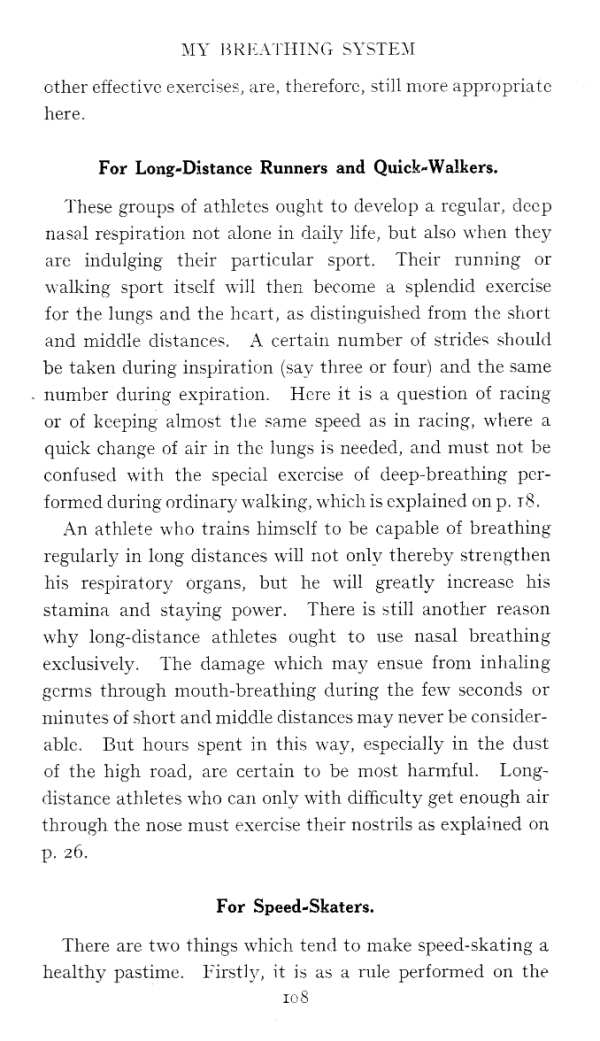mbs 108

MY UKKATIIING SYSTEM
cther etfective exercises, are, thereforc, still morę appropriate here.
For Long-Distance Runners and Quick-Wa!kers.
Tliese groups of athlctes ought to develop a reguł ar, dccp nasal respiration not alone in daily life, but also when they are indulging their partirular sport. Their running or walking sport itsclf will then become a splendid excrcise for the lungs and the hcart, as distinguished from the short and middle distances. A certaiu number of strides should be taken during inspiration (say tliree or four) and the same number during expiration. Here it is a ąuestion of racing or of keeping almost the same speed as in racing, where a quick change of air in the lungs is needed, and must not be confused with the special exercise of deep-breathing per-formed during ordinary walking, whieh is cxp!ained on p. t8.
An athlete who trains himself to be capable of breathing regularly in long distances will not only thereby strengthen his respiratory organs, but he will greatly inerease his stamina and staying power. There is still another reason why long-distance athlctes ought to tise nasal breathing exclusively. The damage whieh may ensue from inhaling germs through mouth-breathing during the few scconds or minutes of short and middle distances may never be consider-ablc. But hours spent in this way, especially in the dust of the high road, are certain to be most harmful. Long-distance athletes who can only with difficulty get enough air through the nose must exercise their nostrils as explanied on p. 26.
For Speed-Skaters.
There are two things whieh tend to make speed-skating a healthy pastime. Eirstly, it is as a rule performed on the
108
Wyszukiwarka
Podobne podstrony:
mbs 030 MY BKEATHING SYSTEM peaceful repose they are to look for liuppiness and strcngth during the
mbs 113 MY BREATHING SYSTEM diaphragmatic breathing during voluntary contraction. It should be done
mbs 090 MY BREATHING SYSTEM EXERCISE No. 3. Fuli breatbing during twisting of trunk to alternate sid
mbs 098 MY BREATHINT. SYSTEM EXERCISE No. 7. Fuli breathing during twisting and leaning to alternate
mbs 100 MY BRKATHING SYSTEM EXERCISE No. 8. Fuli breathing during arm-raising sideways and subsecjue
więcej podobnych podstron